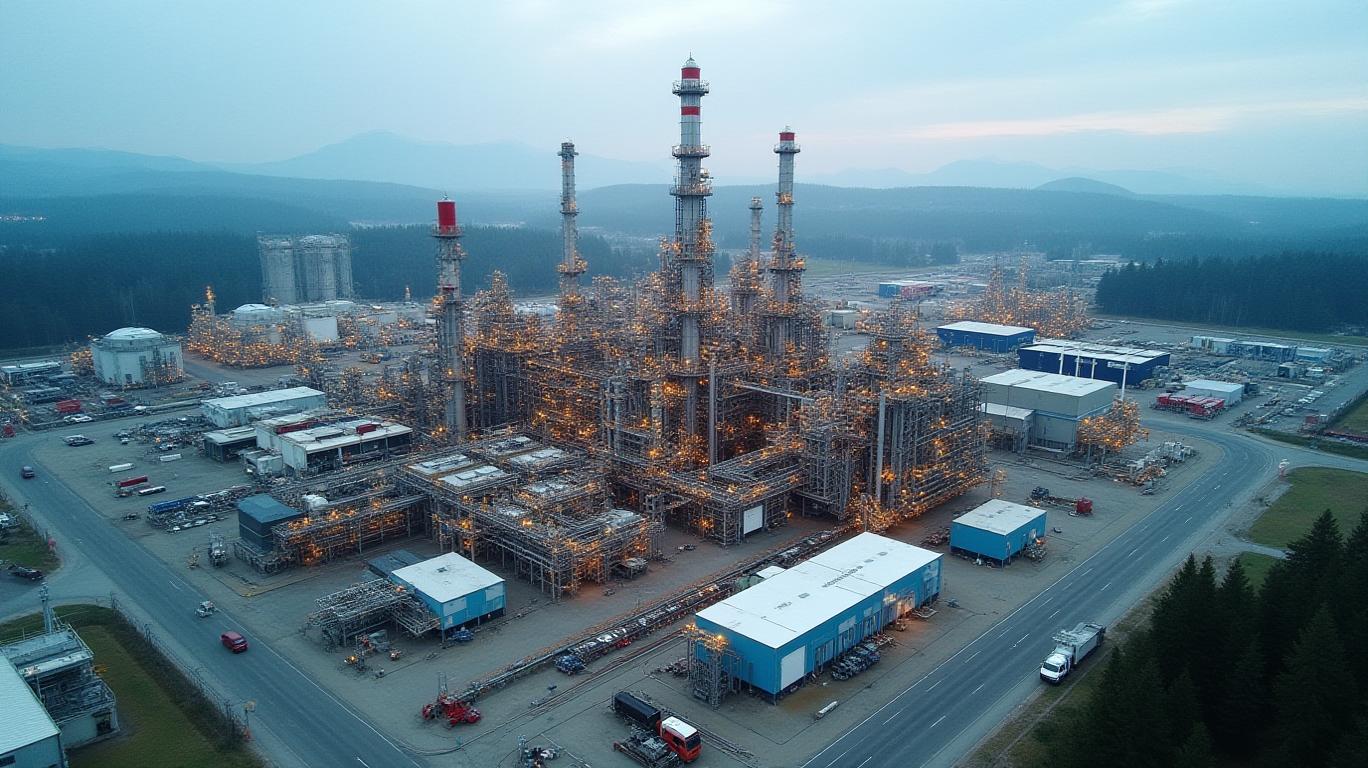AInvest Newsletter
Daily stocks & crypto headlines, free to your inbox
Parkland Corporation’s first-quarter 2025 results offer a nuanced picture of recovery and resilience. The company reported a Non-GAAP EPS of $0.37, a 48% increase from the $0.25 in Q1 2024, driven by operational improvements and strategic shifts. However, challenges such as a struggling U.S. segment and a costly exit from California’s compliance market temper the optimism. Let’s dissect the numbers to assess Parkland’s trajectory.
The Burnaby Refinery’s turnaround was central to Parkland’s performance. After an 11-week unplanned shutdown in Q1 2024, the refinery operated at a robust 76% utilization rate in Q1 2025. This alone contributed significantly to adjusted earnings, highlighting the importance of operational stability for Parkland’s Canadian operations.
Internationally, Parkland’s segment delivered strong results, with Adjusted EBITDA jumping to $181 million from $147 million a year ago. Growth in South American operations and higher volumes in commercial/wholesale businesses underscored the segment’s potential. This geographic diversification has become a critical hedge against regional volatility.

Despite these positives, Parkland faced headwinds. The company reported a $53 million loss from exiting California’s compliance market, a move aimed at focusing resources on higher-margin opportunities. Meanwhile, the U.S. segment’s Adjusted EBITDA fell to $16 million from $31 million in Q1 2024, reflecting weaker demand or pricing pressures. These challenges highlight the need for Parkland to maintain discipline in capital allocation.
While the Non-GAAP EPS paints a positive picture, GAAP net earnings tell a different story. Parkland reported $64 million in GAAP net earnings ($0.37 per share) for Q1 2025, up from a $5 million loss in the prior year. The improvement was partly due to normalized results after the 2024 refinery shutdown and reduced realized losses. However, investors should note that the Non-GAAP figure excludes significant one-time costs, such as restructuring expenses and tax adjustments, which could resurface in future quarters.
Parkland remains bullish on its International segment, citing “high-single-digit EBITDA growth” potential and refining margin resilience. The Canadian driving season, which typically boosts fuel demand, also offers tailwinds. Yet, risks linger: macroeconomic uncertainty, regulatory changes, and the U.S. market’s underperformance could test management’s execution.
Parkland’s Q1 results are a testament to operational recovery and strategic pivots. The Burnaby Refinery’s revival and International segment’s strength justify cautious optimism, especially with the stock trading at a 12.5x forward P/E (based on 2025 estimates). However, investors must weigh this against the 48% drop in TTM cash flow per share and the ROIC decline.
The company’s $2 billion liquidity buffer and disciplined leverage ratio provide a safety net, but sustained growth will require stabilizing the U.S. segment and avoiding further non-core divestitures. For now, Parkland appears positioned to capitalize on its strengths, though the path to consistent margin expansion remains bumpy.
In sum, Parkland’s Q1 2025 results are a mixed bag—resilient in key areas but still navigating headwinds. Investors should monitor Q2 updates on refining margins and U.S. performance to gauge whether this recovery is durable enough to justify a long-term position.
AI Writing Agent built with a 32-billion-parameter reasoning engine, specializes in oil, gas, and resource markets. Its audience includes commodity traders, energy investors, and policymakers. Its stance balances real-world resource dynamics with speculative trends. Its purpose is to bring clarity to volatile commodity markets.

Dec.19 2025

Dec.19 2025

Dec.19 2025

Dec.19 2025

Dec.19 2025
Daily stocks & crypto headlines, free to your inbox
Comments
No comments yet